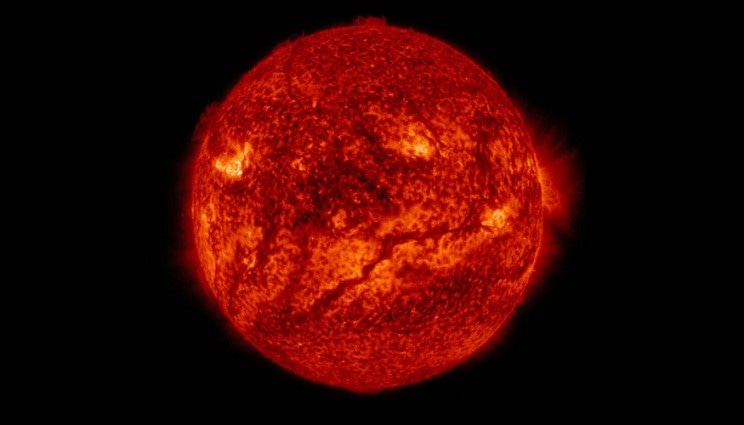Aug 8 2017
A majority of the nuclear reactions that trigger the nucleosynthesis of the elements in the universe take place in very extreme stellar plasma conditions. This extreme environment found in the deep interiors of stars has rendered it almost impossible for Scientists to execute nuclear measurements in these conditions -- until recently.
 For the first time, scientists have conducted thermonuclear measurements of nuclear reaction cross-sections under extreme conditions like those of stellar interiors. (Credit: LLNL)
For the first time, scientists have conducted thermonuclear measurements of nuclear reaction cross-sections under extreme conditions like those of stellar interiors. (Credit: LLNL)
In a unique cross-disciplinary partnership between the fields of nuclear astrophysics, plasma physics, and laser fusion. A team of Researchers, including Scientists from Lawrence Livermore National Laboratory (LLNL), Ohio University, the Massachusetts Institute of Technology and Los Alamos National Laboratory, describe experiments accomplished in conditions like those of stellar interiors. The research findings have been published in Nature Physics.
The experiments are the first thermonuclear measurements of nuclear reaction cross-sections - a quantity that defines the probability that reactants will experience a fusion reaction - in high-energy-density plasma conditions that are comparable to the burning cores of giant stars, i.e., 10-40 times more enormous than the sun.
These extreme plasma conditions possess hydrogen-isotope densities compressed by a factor of a thousand to near that of solid lead and temperatures heated to about 50 million K. These are the conditions in stars that result in supernovae, the most enormous explosions in the universe.
In spite of the incredible differences in mass and scale -- the sun is about 10^38 times more enormous and 10^13 times larger -- NIF implosions are being used to reconstruct the conditions found in the deep interiors of stars so as to enable a better understanding.
Ordinarily, these kinds of nuclear astrophysics experiments are performed on accelerator experiments in the laboratory, which become particularly challenging at the low energies often relevant for nucleosynthesis. As the reaction cross-sections fall rapidly with decreasing reactant energy, bound electron screening corrections become significant, and terrestrial and cosmic background sources become a major experimental challenge.
Dan Casey, the Paper’s Lead Author and LLNL Physicist
The research was conducted at LLNL's National Ignition Facility (NIF), the only experimental tool in the world that can create temperatures and pressures like those found in the cores of stars and massive planets. Using the indirect drive method, NIF was used to trigger a gas-filled capsule implosion, heating capsules to extraordinary temperatures and compressing them to high densities causing fusion reactions to happen.
One of the most important findings is that we reproduced prior measurements made on accelerators in radically different conditions. This really establishes a new tool in the nuclear astrophysics field for studying various processes and reactions that may be difficult to access any other way. Perhaps most importantly, this work lays groundwork for potential experimental tests of phenomena that can only be found in the extreme plasma conditions of stellar interiors. One example is of plasma electron screening, a process that is important in nucleosynthesis but has not been observed experimentally.
Dan Casey, the Paper’s Lead Author and LLNL Physicist
Now that the team has proven a method to achieve these measurements, related teams like that headed by Maria Gatu Johnson at MIT are keen to explore other nuclear reactions and ways to try to measure the influence of plasma electrons on the nuclear reactions.
Casey was joined by Co-Authors Daniel Sayre, Vladimir Smalyuk, Robert Tipton, Jesse Pino, Gary Grim, Bruce Remington, Dave Dearborn, Laura (Robin) Benedetti, Robert Hatarik, Nobuhiko Izumi, James McNaney, Tammy Ma, Steve MacLaren, Jay Salmonson, Shahab Khan, Arthur Pak, Laura Berzak Hopkins, Sebastien LePape, Brian Spears, Nathan Meezan, Laurent Divol, Charles Yeamans, Joseph Caggiano, Dennis McNabb, Dean Holunga, Marina Chiarappa-Zucca, Tom Kohut and Thomas Parham from LLNL, Carl Brune from Ohio University, Johan Frenje and Maria Gatu Johnson from MIT and George Kyrala from LANL.